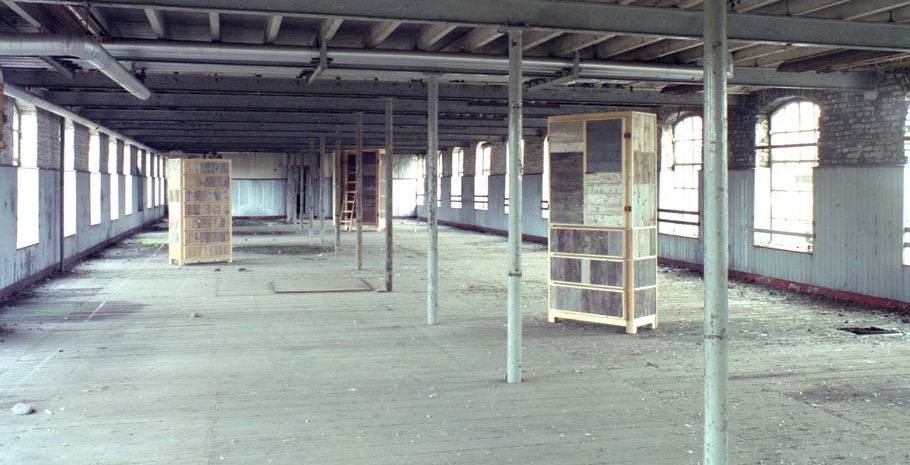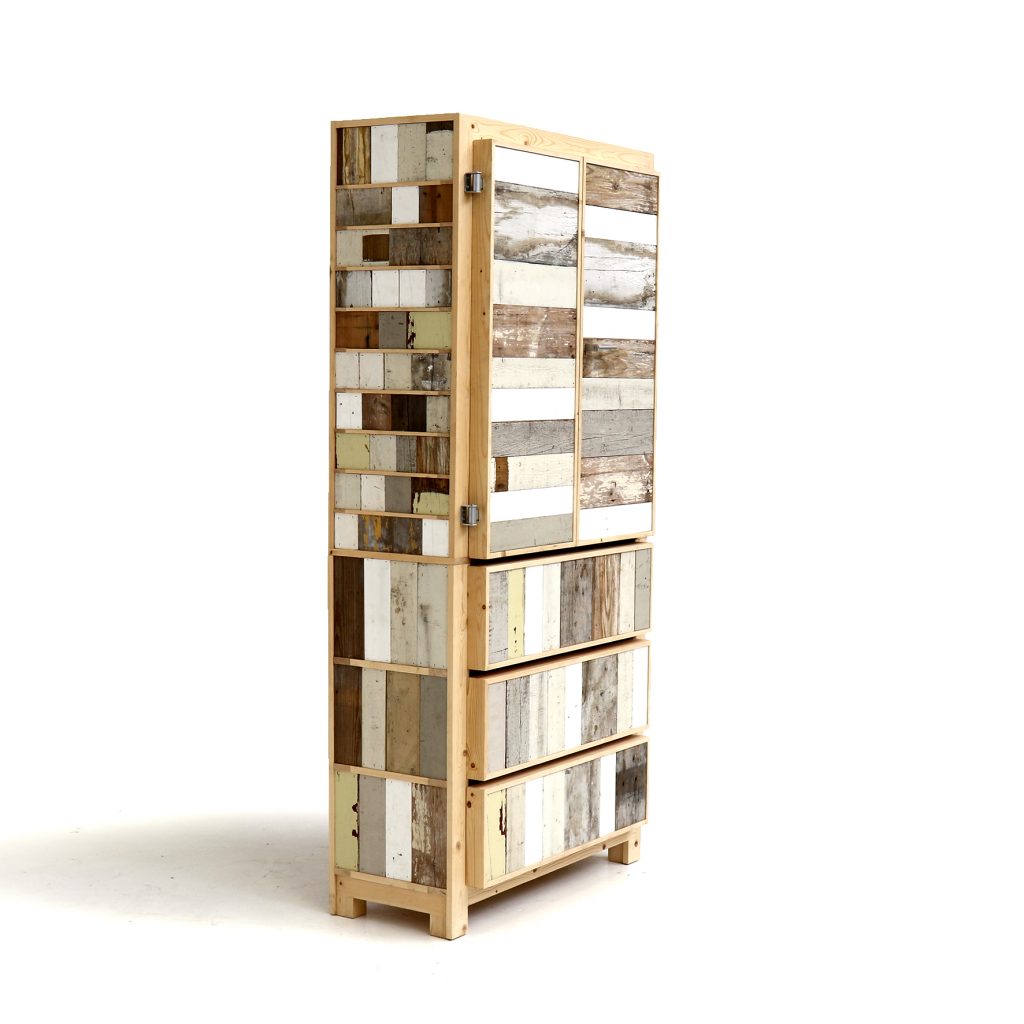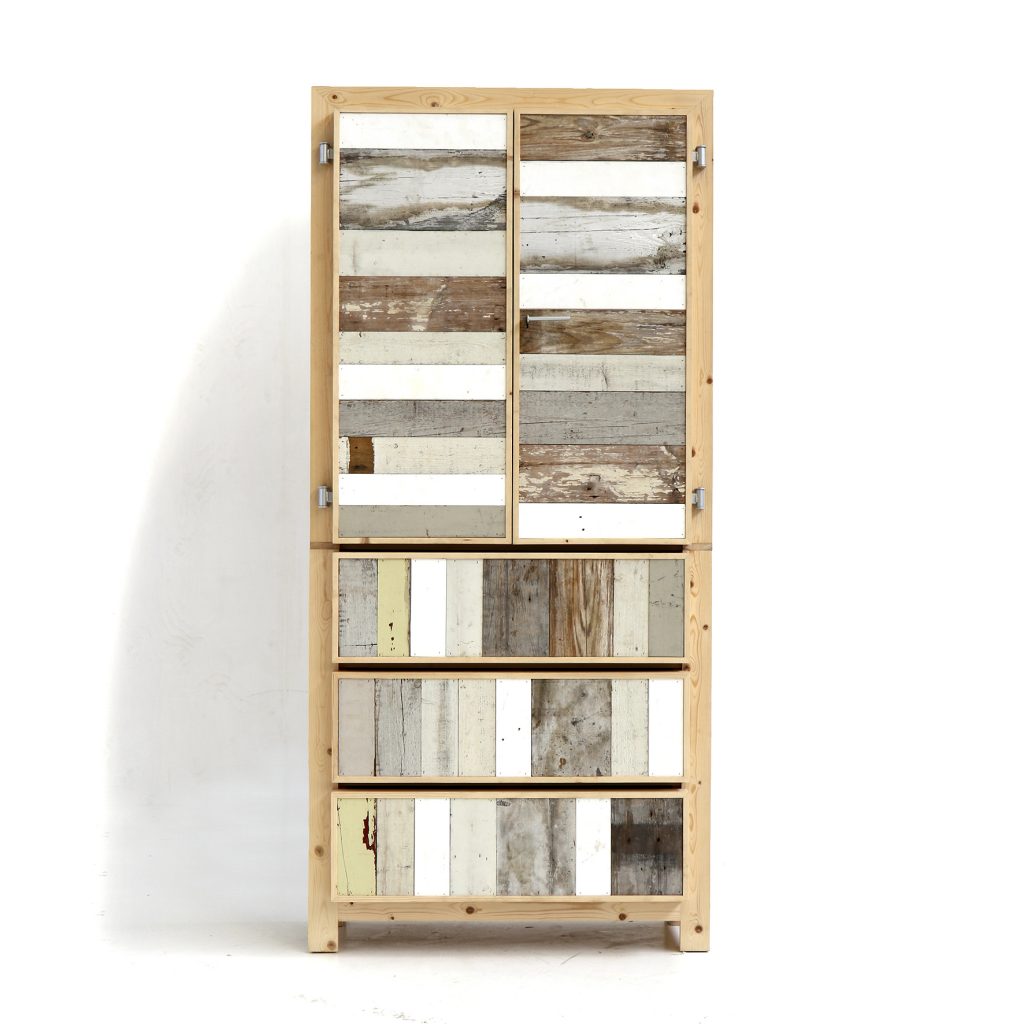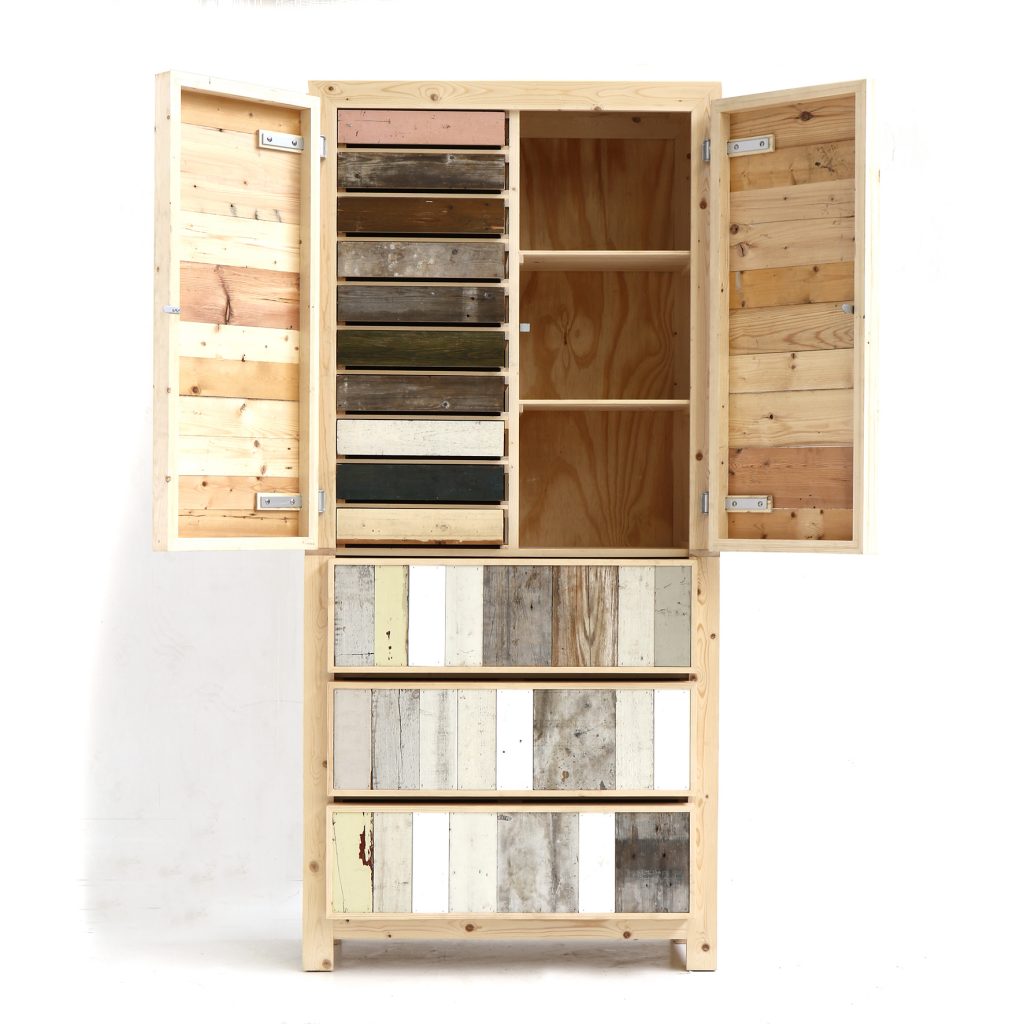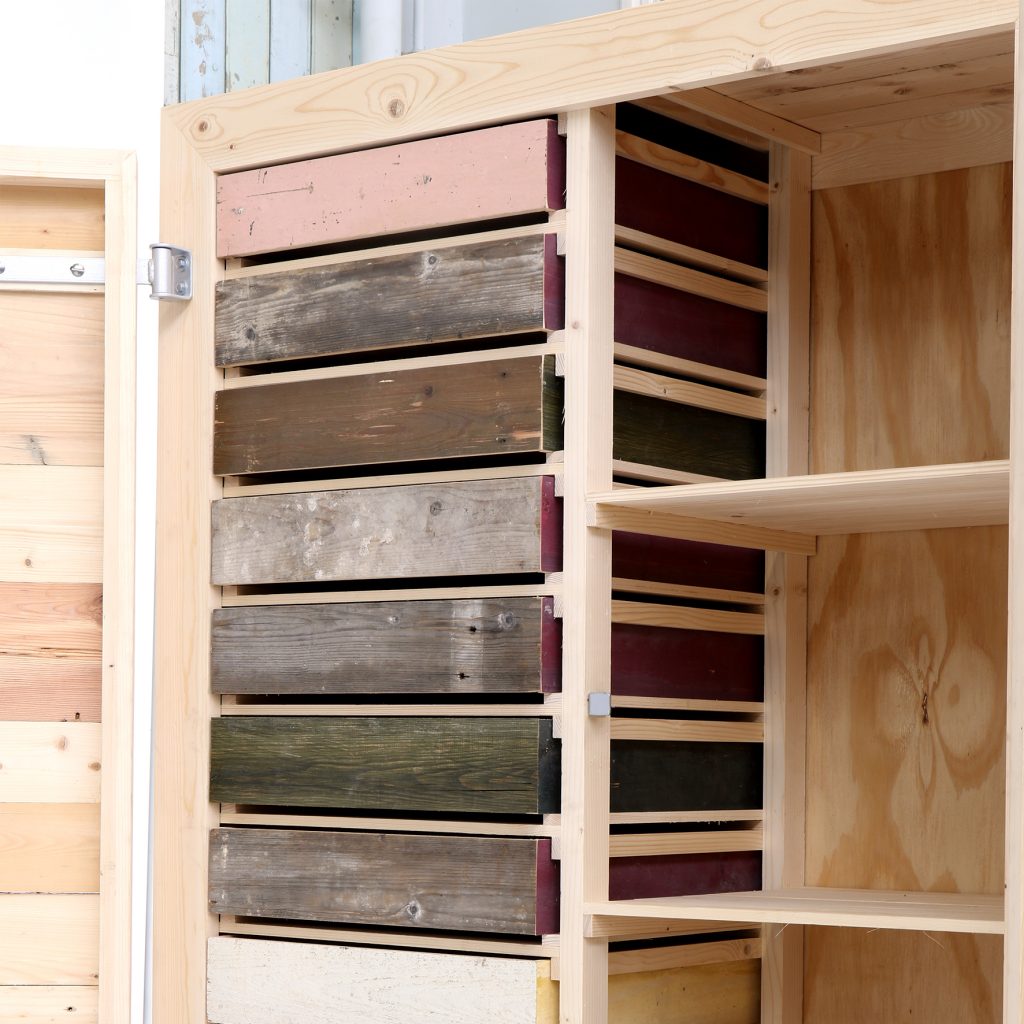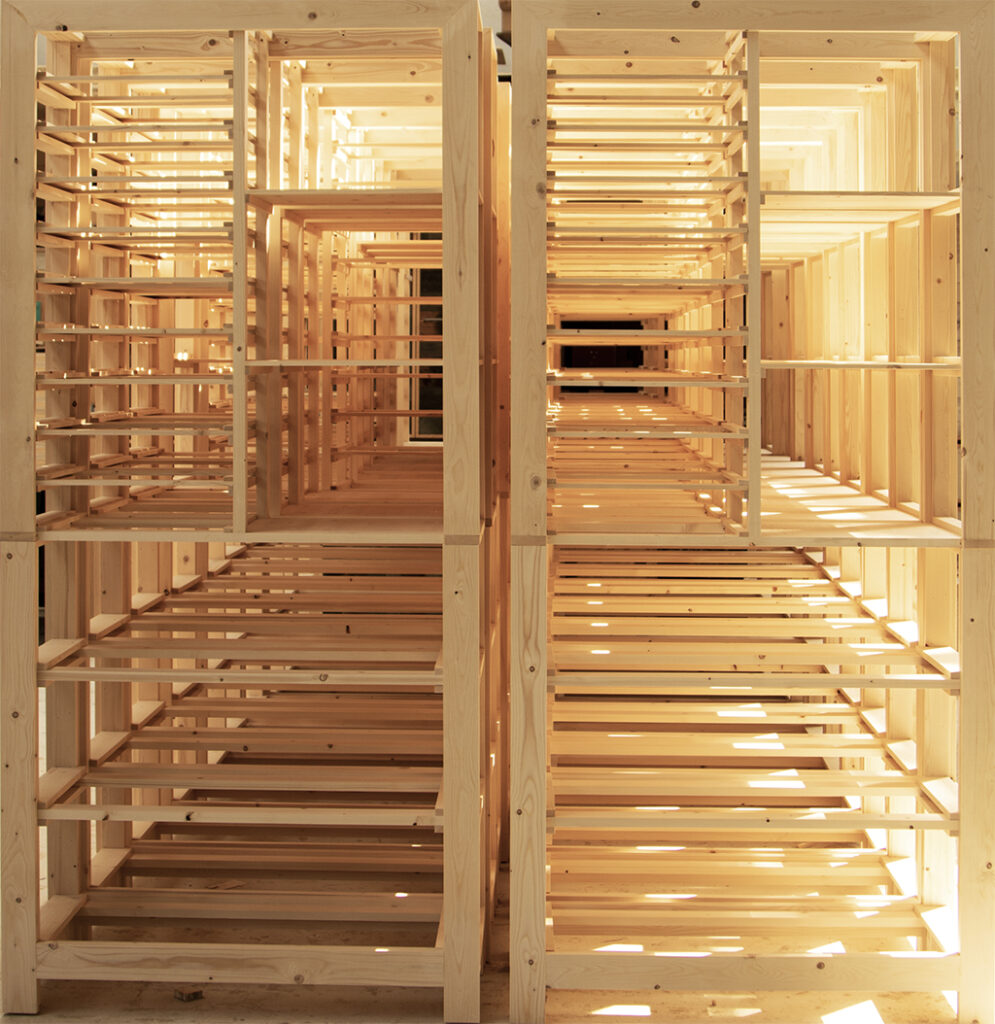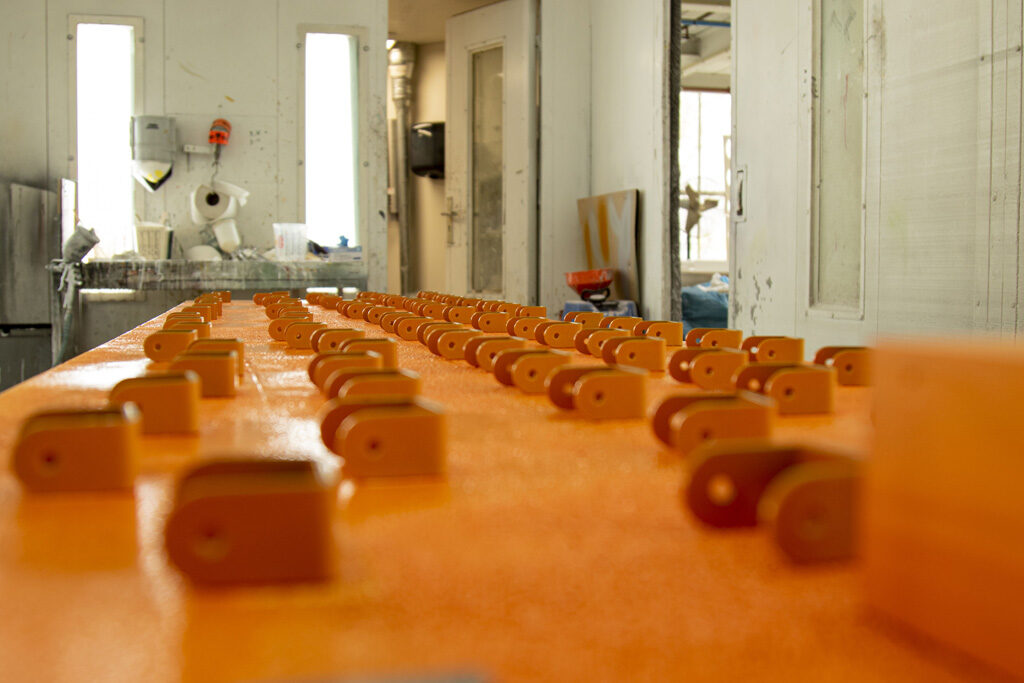22-10-2019
It was 30 years ago that I devised and made a series of scrap wood cabinets for my final exam at the School for Industrial Design (now the Design Academy) in Eindhoven. I immediately named the cabinet, with two doors at the top and three drawers at the bottom, ‘the classic scrap wood cabinet’. I thought that a piece of furniture made from scrap wood was so unusual that it was sensible to choose an antique model with a classic design that everyone is familiar with and that, as far as I can remember, used to stand in my parents’ living room.
The classic cabinet has now become a classic in its own right and has, in hindsight, formed the foundation of our company. We produce unique items of furniture and objects on a small-scale in our own workshop that are sold all over the world. As well as the wood workshop we also have a steel workshop, a ceramic studio, a paint shop, a cardboard and printing studio and an upholstery studio. Practically everything we sell is produced on our own premises in Eindhoven.
The cabinet, made from scrap wood, was actually developed based on purely pragmatic considerations. I was a student with no money and was able to get my hands on the scrap wood, which I thought was really beautiful, for free. By my own doing, scrap wood later became more expensive than new wood, but when I graduated it was ideal for a student with zero budget. I was able to work the wood in the school workshop and at the time I knew I wanted to start my own business and would eventually buy the same machines and that I would also later be able to produce the cabinet myself.
Scrap wood is often full of screws, nails or other pieces of metal. Pieces of wood are often unusable because of tar, glue and/or paint residue and it is often twisted or damaged. Once it is ready to be used for production, the wood has undergone so many extra processes that it has become very expensive and is still not of the highest quality. I wanted to use as much scrap wood as possible for the cabinet without the inferior quality proving problematic, so I made frames (also from scrap wood) in which the wood was secured accross the short side. This meant that I could also use smaller and distorted pieces of wood. The frames keep the wood in place. I chose to bring the inside of the cabinet to the outside, creating a kind of framework covered with scrap wood. The advantage is not only that almost all the wood can be used, but also that it is possible to compose using colour and texture. I designed the hinges and handle myself and made then in the metal workshop at the academy. At the time, I did not know that we would end up making special fittings for almost all my designs.
Material, technique and craftsmanship have always been the starting points of my work. I now realise that, in almost everything I do, I try to make something (new) with what there is. It is not the new that is the starting point, but the old; what exists already. This means that we never have to try our very best to find a suitable material or technique for a design, because they themselves form the point of departure. I think that this way of working is partly our company’s right to exist but despite this, it is always a challenge to make products for a reasonable price.
During this edition of DDW we are celebrating the thirtieth anniversary of the classic scrap wood cabinet. Not only was it the first piece of furniture in the collection, forming the basis of the business as it stands today, but in hindsight, and perhaps more than ever, it has become a symbol of my way of working. We have therefore made a special edition of thirty cabinets.
This post is also available in: NL
« Back to blog